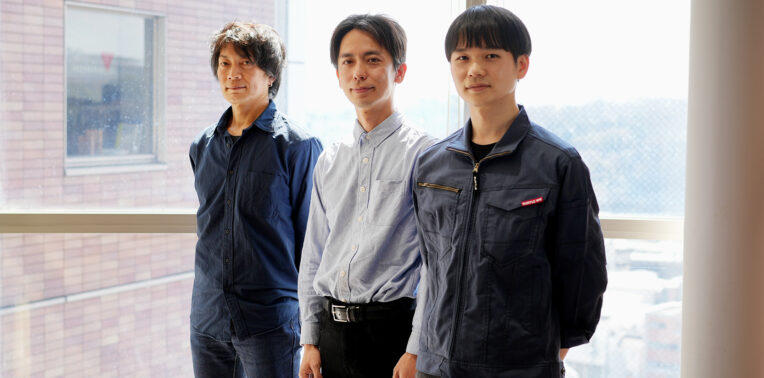
Parental Leave Offers Priceless Time with Family
- #ChildandNursingCare
2023.05.08
In 2020, Keio University established Keio Infant Daycare Support (KIDS), an initiative led by the Office for Equity, Diversity, and Inclusion, to provide assistance through various policies and support measures for faculty and staff members trying to balance work and childcare. With an increased societal focus on paternity leave, in particular, Keio is working to build a more open environment to increase the number of fathers opting to take parental leave. Here, the Faculty of Science and Technology has brought three faculty members together to reflect on their experiences and discuss future challenges around parental leave. (Interview conducted March 2023)
*Pseudonyms are used throughout.
Faculty at the Department of Physics (At left)
Tomoharu Oka
Tomoharu Oka joined the Faculty of Science and Technology in April 2008 as an associate professor and became a full professor in April 2015. He teaches courses in astrophysics and radio astronomy and conducts observational research to explain the origin of the supermassive black holes at the center of all large galaxies.
Engineer at the Technology Support Office (At center)
Ichiro Saito
Ichiro Saito joined Keio in April 2021. At the Yagami Laboratory for Physics and Physico-Informatics, he is engaged in student education, such as helping set up and grade student experiments, as well as technical support for student and faculty research.
Engineer at the Technology Support Office (At right)
Keita Sakamoto
Keita Sakamoto joined Keio in April 2016. He oversees class and research support for machine tools and other equipment at the Manufacturing Center.
Housework & Childcare: A Joint Effort Between Spouses
― First of all, could you tell us a little about your current “daddy duties”?
Oka:We have two sons, ages three and nine months, and my wife is currently on maternity leave. While I usually drop my older child off at daycare in the mornings, I also try to participate in housework and childcare as much as possible by working more from home. My wife plans to return to work once our youngest turns one, so it’s becoming a bit of a mission-impossible situation. [laughs]
Saito:We have two daughters, ages three and one. My wife’s workplace allows her to take maternity leave until our youngest turns three, so she’s been on leave since we had our first child. My older child attends daycare. I have to commute to work almost every day due to the nature of my job. But since taking care of two kids single-handedly can be challenging for my wife, we’ve developed a routine where I help prepare breakfast and do the grocery shopping while my wife and I take turns bathing the girls and putting them to bed. I think we’ll be adopting this approach for the foreseeable future. [laughs]
Sakamoto:I have a one-year-old son. My wife quit her job before giving birth and is now a stay-at-home mother, but we believe that housework and childcare should be shared equally between spouses. I’m a technician like Saito-san, so I have to go into the office most days, too. But I always aim to leave work promptly in order to maximize my time with family.
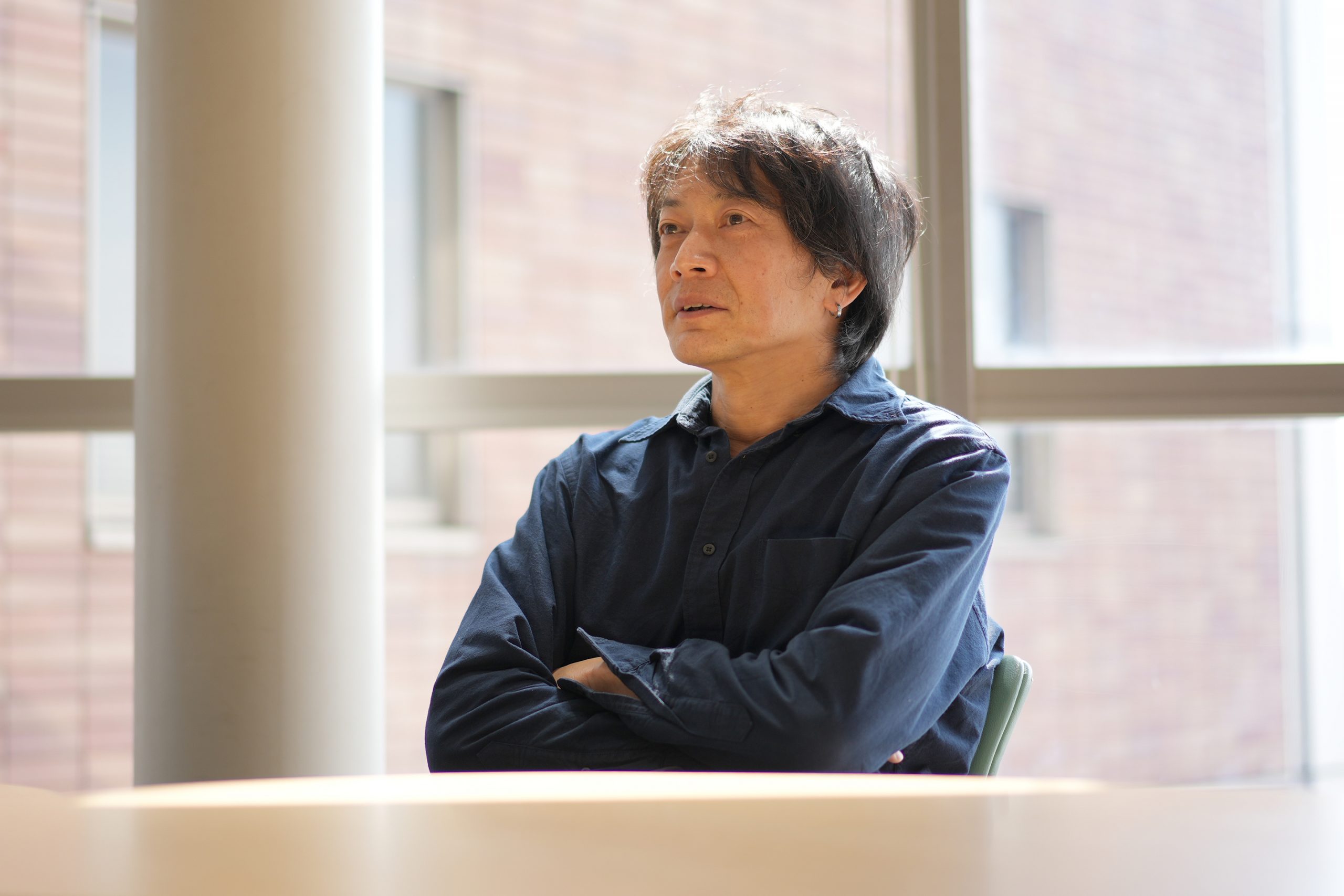
Collegiate Support the Key to Taking Parental Leave Without Second Thoughts
– Since you all are involved with coursework, taking paternity leave must have been difficult. Please tell us about your experiences.
Oka:My first son was born mid-January, which was in the middle of the semester, so I took paternity leave for one month in February. Working in an incredibly free environment like Keio, I didn’t have to worry about what others thought. But it seemed rare for a male faculty member to take parental leave at the time, so many of my female colleagues showered me with praise for my decision. [laughs] When our second son was born last May, I debated whether or not to take leave, but my wife told me that she would be fine since she had gotten used to childcare, so I ended up not taking it.
Saito:With our first daughter, I had never heard of any of my coworkers taking parental leave, so I didn’t even think about it. But then I learned that taking paternity leave was quite common for my friends working in the private sector, so I decided to do the same with our second. Our daughter was born in October, in the middle of the semester, so much like Prof. Oka, I only started my leave after the semester had ended. The people at work were so supportive that I never had a second thought.

Sakamoto:It was extremely easy for me to take parental leave thanks to the precedent set by Saito-san. The people in the department were already used to dealing with this kind of thing. [laughs] Keio offers one month of paternity leave, but I took about two months off in total, including time off immediately after the birth and other university holidays that I hadn’t taken due to the COVID-19 pandemic. My wife needed time to recover after giving birth, so I took over all the household chores during my leave. I’m so glad that we were able to spend this important time together as a family. Saito-san, thank you for all of your advice during that time.
Saito:I’m sure by now you know how the system works better than I do. [laughs] I also did all of the household chores during my leave, and I have to say that taking leave at that time was the best thing I could have done. Our older daughter had just started to act like a baby again, so I was able to give her the attention she needed.
Oka:Our oldest son started acting out when our second son was born, too, so I took on the role of caretaker while continuing to work. I hate to say that COVID-19 had a silver lining, but the pandemic allowed me to do more work remotely and take fewer business trips.
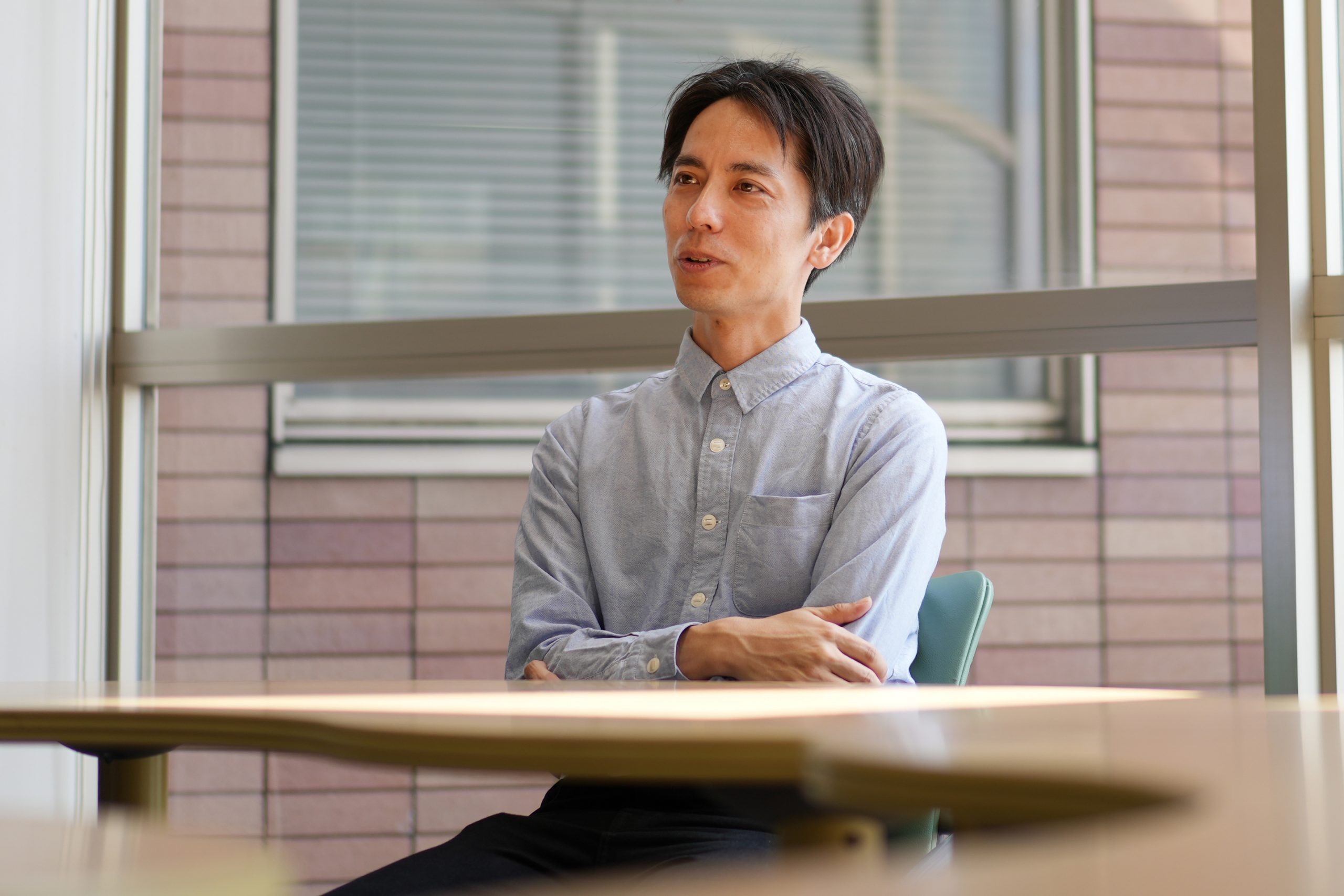
How to Encourage Dads to Take Parental Leave
– Did you experience any challenges after paternity leave?
Sakamoto:Engineers like me and Saito-san have to consider the timing of classes, but on the other hand, we aren’t transferred to other departments very often, so it was easier for me to ask for support from my colleagues. This may be a challenge in other departments where people are transferred more regularly.
Saito:Yes, indeed. I’d also add that while the system for taking paternity leave is well established, not many fathers have utilized it, so I felt like there was a lack of experience and expertise in handling those of us who have decided to take it. There is no precedent for dealing with specific situations, so it’s up to those of us who have taken paternity leave to share our experiences.
Oka:That’s exactly how I felt with our second child. But I have a lot of freedom as a member of the academic faculty, so we managed to some extent, even without my taking leave. It’s fair to say that I had a certain degree of parental “know-how” the second time around, which is why I decided I could make it work without taking leave. I didn’t want to cause any disruptions to my teaching or research. And there’s, of course, the issue of reduced income. I think this is something that remains an issue even after the proper mechanisms have been established and the expertise and culture around it are widespread.
Saito:I felt the same thing when I saw my income tax statement at the end of last year. Perhaps this is one of the reasons why so few people take paternity leave, not only here at Keio but throughout Japan.
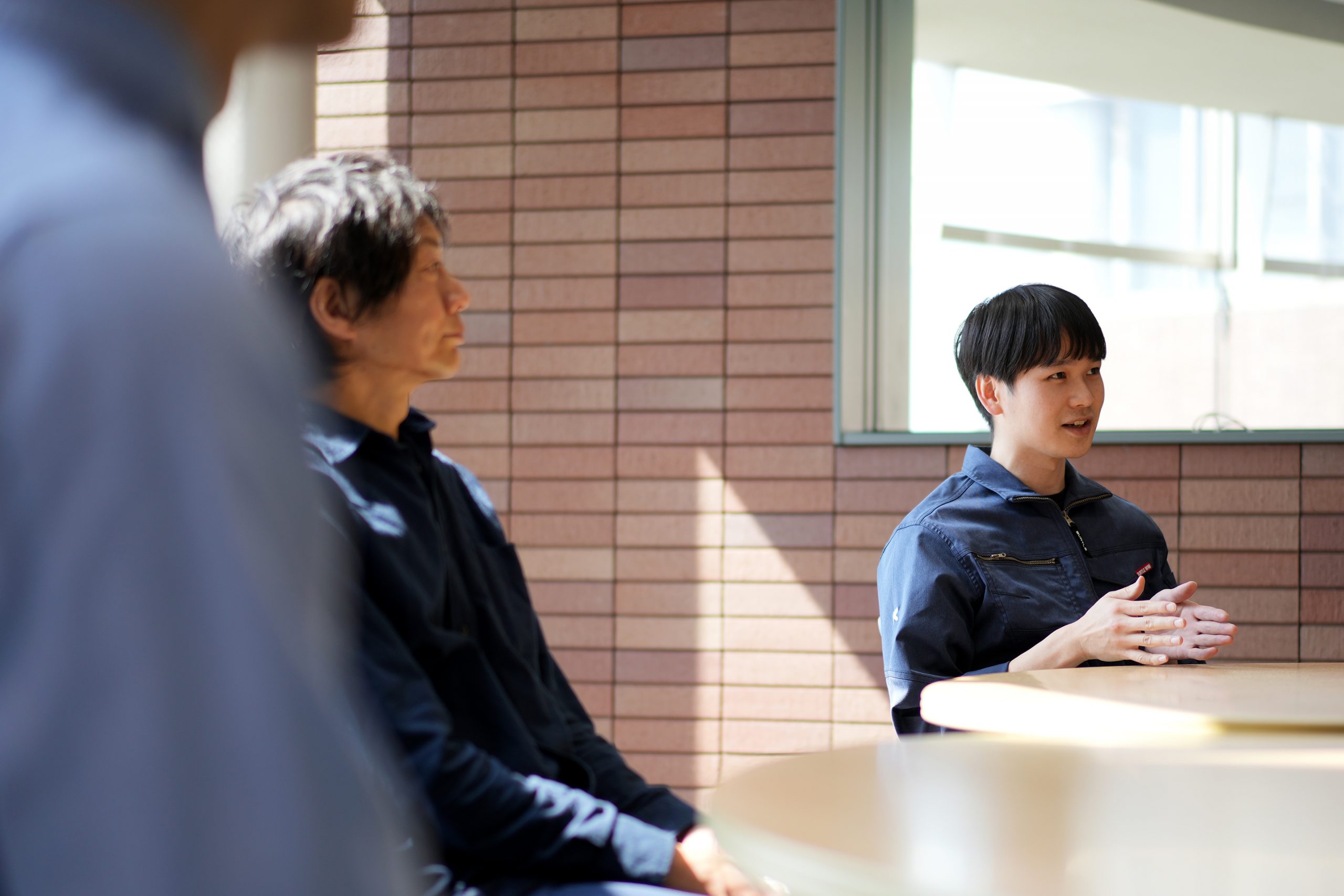
– Prime Minister Kishida recently announced that he wants to raise the rate of men taking paternity leave to 50%* by 2025.
*The rate as of 2021 was 13.97%.
Sakamoto:I think it shows a determination not only to reform the way people work but also to take serious measures to address the nation’s declining birthrate. He’s promised additional financial support, so this is something to watch.
Oka:People my age also face the issue of paying for nursing care for their parents, so I would love to see some additional support. [laughs] The best thing about taking parental leave for me was to see how happy my child was. Not to mention hearing the words “thank you” from my wife and feeling like I was really playing my part. Despite the challenges, the month I took was priceless. I wouldn’t trade it for anything.
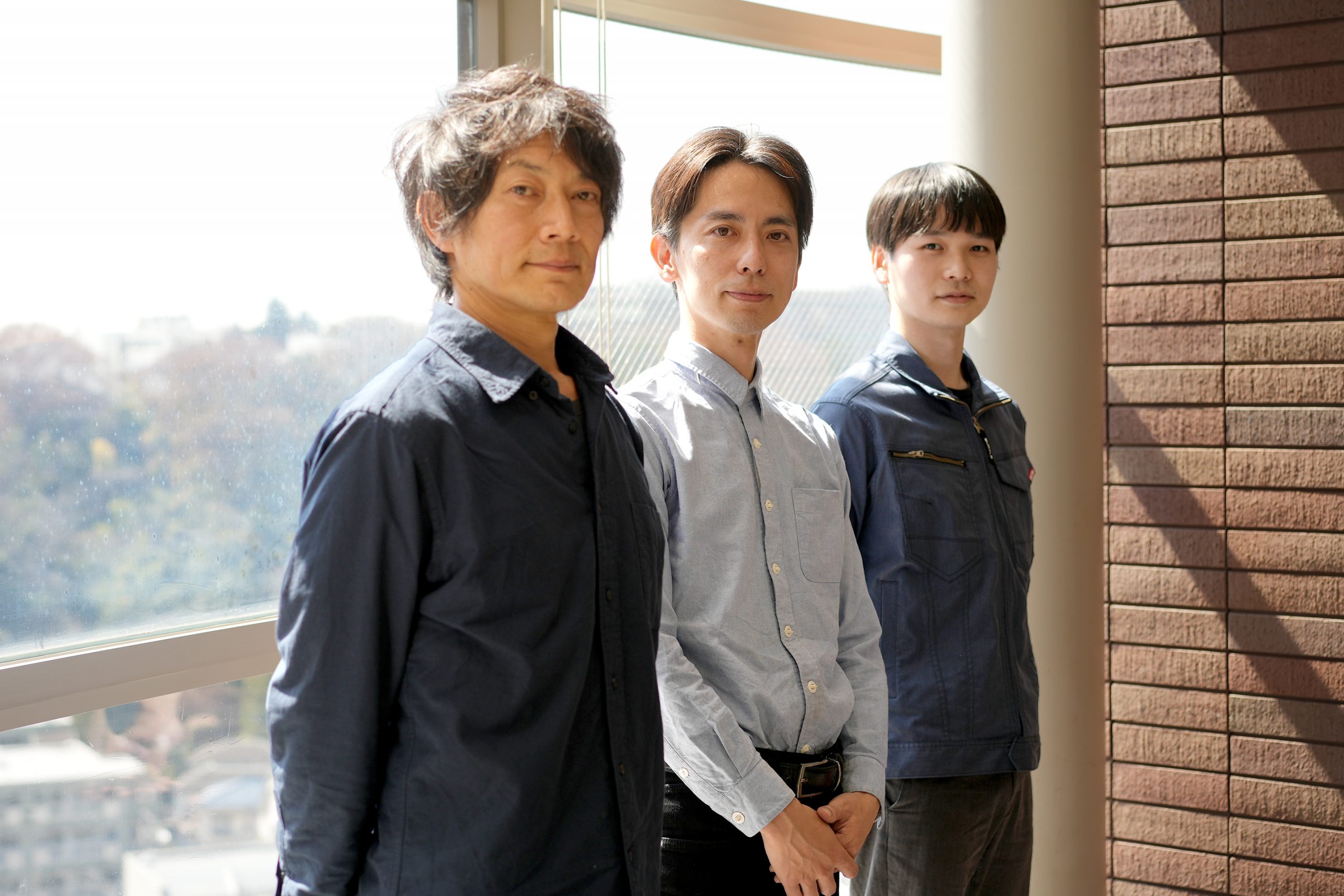
(Photo by KIYOSHIRO OKADA)

